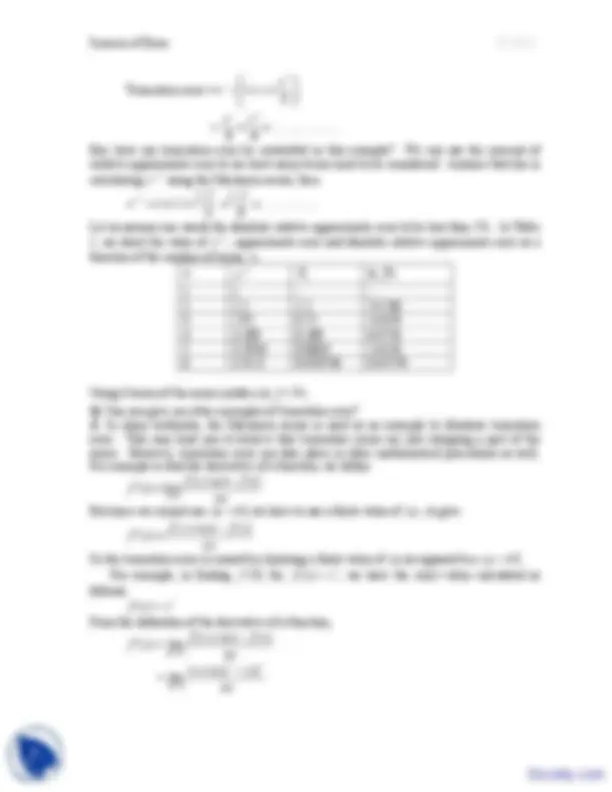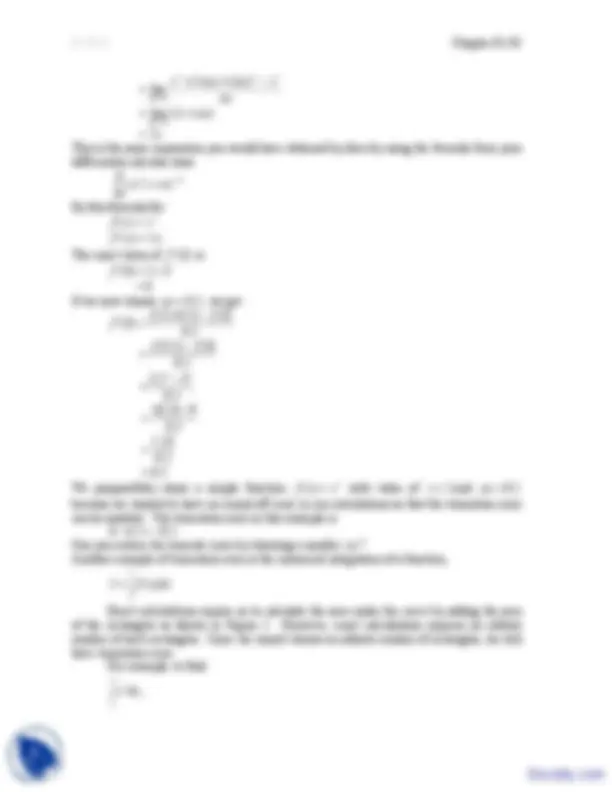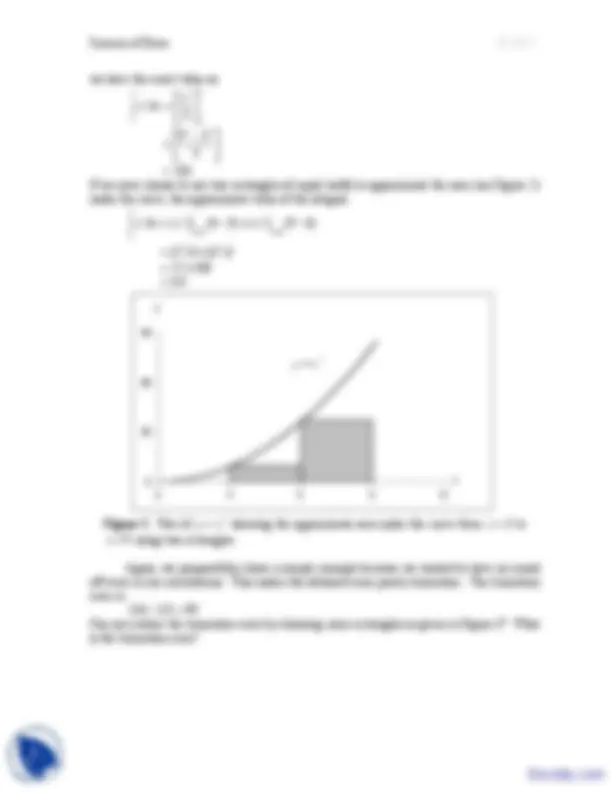





Study with the several resources on Docsity

Earn points by helping other students or get them with a premium plan


Prepare for your exams
Study with the several resources on Docsity

Earn points to download
Earn points by helping other students or get them with a premium plan
Community
Ask the community for help and clear up your study doubts
Discover the best universities in your country according to Docsity users
Free resources
Download our free guides on studying techniques, anxiety management strategies, and thesis advice from Docsity tutors
Main Points are:Sources of Error, Numerical Methods, Truncation Error, Round Off Error, Applications of Numerical Methods, Mathematical Model, Modeling Technique, Electronic Detection Device, Range Gate, Patriot Defense System
Typology: Exams
1 / 6

This page cannot be seen from the preview
Don't miss anything!




After reading this chapter, you should be able to:
Error in solving an engineering or science problem can arise due to several factors. First, the error may be in the modeling technique. A mathematical model may be based on using assumptions that are not acceptable. For example, one may assume that the drag force on a car is proportional to the velocity of the car, but actually it is proportional to the square of the velocity of the car. This itself can create huge errors in determining the performance of the car, no matter how accurate the numerical methods you may use are. Second, errors may arise from mistakes in programs themselves or in the measurement of physical quantities. But, in applications of numerical methods itself, the two errors we need to focus on are
Q : What is round off error?
A : A computer can only represent a number approximately. For example, a number like 3
may be represented as 0.333333 on a PC. Then the round off error in this case is
. Then there are other numbers that cannot be represented
calculations.
Q : What problems can be created by round off errors? A : Twenty-eight Americans were killed on February 25, 1991. An Iraqi Scud hit the Army barracks in Dhahran, Saudi Arabia. The patriot defense system had failed to track and intercept the Scud. What was the cause for this failure? The Patriot defense system consists of an electronic detection device called the range gate. It calculates the area in the air space where it should look for a Scud. To find out where it
01.03.2 Chapter 01.
should aim next, it calculates the velocity of the Scud and the last time the radar detected the Scud. Time is saved in a register that has 24 bits length. Since the internal clock of the system is measured for every one-tenth of a second, 1/10 is expressed in a 24 bit-register as 0.00011001100110011001100. However, this is not an exact representation. In fact, it would need infinite numbers of bits to represent 1/10 exactly. So, the error in the representation in decimal format is
Figure 1 Patriot missile (Courtesy of the US Armed Forces, http://www.redstone.army.mil/history/archives/patriot/patriot.html)
8
1 2 3 4 22 23 24
The battery was on for 100 consecutive hours, hence causing an inaccuracy of
1 hr
3600 s 100 hr
s
The shift calculated in the range gate due to 0. 3433 s was calculated as 687 m. For the Patriot missile defense system, the target is considered out of range if the shift was going to more than 137 m.
Q : What is truncation error? A : Truncation error is defined as the error caused by truncating a mathematical procedure. For example, the Maclaurin series for e x is given as
.................... 2! 3!
2 3 x x e x x
This series has an infinite number of terms but when using this series to calculate e x , only a
finite number of terms can be used. For example, if one uses three terms to calculate (^) e x , then
. 2!
x^2 e x^ x
the truncation error for such an approximation is
01.03.4 Chapter 01.
x
x x x x x x (^)
2 2 2 0
lim
lim( 2 ) 0 x x x
2 x This is the same expression you would have obtained by directly using the formula from your differential calculus class
( xn^ ) nxn ^1 dx
d
By this formula for f ( x ) x^2 f ( x ) 2 x
The exact value of f (^3 )is f ( 3 ) 2 3 6 If we now choose x 0. 2 , we get
f f f
f ( 3. 2 ) f ( 3 )
We purposefully chose a simple function f ( x ) x^2 with value of x 2 and x 0. 2
because we wanted to have no round-off error in our calculations so that the truncation error can be isolated. The truncation error in this example is 6 6. 2 0. 2. Can you reduce the truncate error by choosing a smaller x? Another example of truncation error is the numerical integration of a function,
b
a
I f ( x ) dx
Exact calculations require us to calculate the area under the curve by adding the area of the rectangles as shown in Figure 2. However, exact calculations requires an infinite number of such rectangles. Since we cannot choose an infinite number of rectangles, we will have truncation error. For example, to find
9
3
Sources of Error 01.03.
we have the exact value as
9
3
x^2 dx
9
3
3
3
x
If we now choose to use two rectangles of equal width to approximate the area (see Figure 2) under the curve, the approximate value of the integral
( ) ( 6 3 ) ( ) ( 9 6 ) 6
2 3
2
9
3
x dx x x
y = x 2
0
30
60
90
0 3 6 9 12
y
x
Figure 2 Plot of y x^2 showing the approximate area under the curve from x 3 to x 9 using two rectangles.
Again, we purposefully chose a simple example because we wanted to have no round off error in our calculations. This makes the obtained error purely truncation. The truncation error is 234 135 99 Can you reduce the truncation error by choosing more rectangles as given in Figure 3? What is the truncation error?